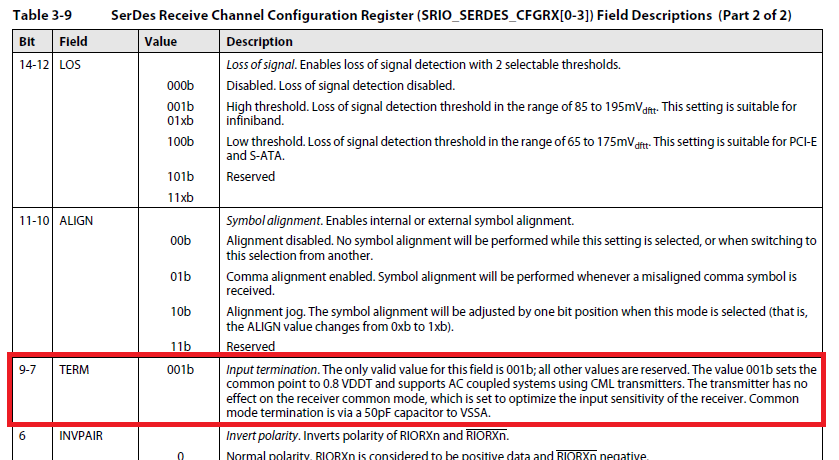Hi,
I think that serdes interface as SRIO require the AC-coupling capacitor and external termination.
However, SRIO UG(SPRUGW1B) of 66AK2H12 described as follows:
So, does this device not need external terminations because it is contain internal termination resistors?
Best regards,
H.U



